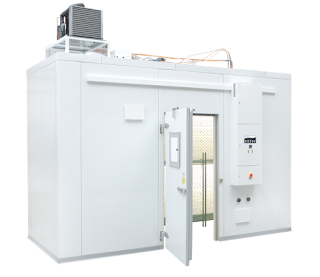 |
| Cell culture incubators Courtesy Esco |
Equipment from decades ago was primitive when compared to what is available today. One early model sported all copper construction, not to impede contamination, but to enable its construction method using soldered seams. This particular water jacketed incubator was also heated by a gas flame and used a mercury filled temperature switch to control temperature within a few degrees of a setpoint.
Why were incubators water jacketed?There were two valid design reasons for building a water jacketed cabinet. Early on, heating options were practically limited by cost and capability to the delivery of heat in concentrated areas. Since temperature uniformity throughout the work zone is probably the most important performance consideration for an incubator, it was necessary to evenly disperse the concentrated heat throughout the chamber in a manner that did not create undesirable variance. One way to accomplish this was, and still is for some manufacturers, to surround the chamber with a water filled "jacket". The water served as a heat distributor through natural convection.
The second reason for water jacketed design is to provide an interior environment with very little air movement. With all the chamber wall surfaces maintained at the same temperature, the heat input to the work space is uniform, and robust air circulation to provide an even temperature distribution is not needed. Air movement tends to promote desiccation in cell culture media, so lower air movement is generally better. Many cell culture operations also require very high levels of relative humidity, and lower chamber air movement will tend to promote a higher moisture level in the contained space. It was common to place a tray of water in the base of the chamber to saturate the air.
Not surprisingly, manufacturers continually strive to improve their products. New or improved technologies for measurement, control, or construction related to incubator design eventually reach a price point that enables their practical incorporation as a product improvement. Improved temperature controllers, sensors, and heater designs have enabled the production of incubators that deliver performance comparable or superior to water jacketed designs, but without the water jacket.
To grow, cells have the same needs today they had decades ago. Manufacturer's application of technological improvements to continually enhance their products has provided real benefits to researchers and other users of cell culture incubators. Higher reliability and lower requirements for attention from the user has increased lab efficiency.
Get more information about the useful features incorporated in the latest cell culture incubator designs from product specialists. Share your concerns and challenges with them, combining your own process knowledge and experience with their product application expertise to develop an effective solution.

